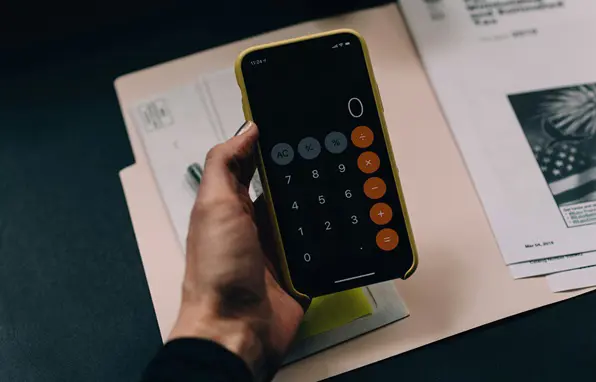Easy Budget Creation Apps for South Africans
29 OCTOBER 2025
In tough financial times, creating and sticking to a budget is more important than ever. Whether you want to save for a holiday, manage your everyday spending, or prepare for major shopping events like Black Friday, using a budgeting app tailored to South African users can give you the clarity and control you need.

Why budgeting apps matter
A budgeting app brings your financial picture into one place: bank accounts, spending categories, savings goals, credit cards and more. That holistic view helps you understand exactly where your money is going and how to adjust accordingly.
In South Africa, apps that let you link bank accounts, credit and store cards, loans and investments can be especially useful as it gives you the power to get a full overview of your finances in seconds. With access to your information, you can set realistic budgets, monitor when you stray, and stay ahead of overspending before it becomes a problem.
Some of the top budgeting apps for South African users
Here are several apps you could have a look at if you are searching for concrete tools for managing your finances.
1. Vault22
Vault22 is built for South African users and emphasises visual insights into spending, net-worth tracking and helping manage debt. On its Google Play store page it claims: “See all your money in one place: link your bank accounts, credit and store cards, investments, loans and rewards from over 120 South African financial institutions.”
Pros: Focus on South Africa, easy to use, supports many institutions.
Cons: Reviews on the app store indicate some customer service delays as well as some occasional bugs.
Tip: Use Vault22’s “nudges” or alerts to notify you when you are close to budget limits.
2. Spendee
Although not entirely South-African-only, Spendee is featured in multiple South African reviews of budgeting apps and is seen as a solid choice. It supports linking various accounts, custom budgets and collaborative wallets (for shared budgets).
Pros: Intuitive UI, good for couples/households sharing budgets.
Cons: Some features behind paid tiers; local bank integrations may vary, may deal with some bugs or connectivity issues according to some reviews on the app store.
Tip: If sharing a budget with a partner or family member (e.g., for grocery or household spending), the shared wallet feature can be helpful.
3. Goodbudget
Goodbudget uses the 'envelope system' budgeting method (digital envelopes for categories) and is available to South Africans users. This leans on older methodology of having all your cash in envelopes, and brings it to the digital age. As you spend, you remove cash from your 'envelope', and because it is specific, you are quickly able to see where you may be on track to overspend.
Pros: Great if you prefer simple, category-based budgeting (envelopes = grocery, transport, fun); supports multiple devices and joint budgeting.
Cons: Although simple in concept, the app requires hands-on budgeting, users have noted some bugs over the years.
Tip: Use Goodbudget if you want clear buckets (envelopes) for your spending categories and stick to them - especially helpful if you’re trying to control impulse purchases.
How to get started (and make it stick)
- Step 1: Link your accounts (where supported) – Bring bank accounts, investing holdings, credit/store cards into one dashboard so you can view everything together.
- Step 2: Set your budget categories – Pick categories you want to monitor (e.g., groceries, transport, entertainment, subscriptions) and assign realistic amounts. Many local guides emphasise reviewing actual spend vs budget and adjusting monthly.
- Step 3: Review and adjust regularly – A budget is not a ‘set and forget’ exercise. Monitoring each month and modifying categories based on real behaviour helps you stay on track.
- Step 4: Track major events and push-spends – For example, if you know Black Friday or year-end shopping is coming up, build into the budget a ‘special purchases’ category. Pre-allocating funds for that purchase avoids stress later.
- Step 5: Use alerts and insights – Most apps allow you to set alert thresholds (e.g., when you reach 80% of your grocery budget). Use them to keep yourself accountable.
- Step 6: Celebrate and save – When you stick to your budget or improve your spending behaviour, it’s worth acknowledging the achievement. This builds positive habits.
South Africa’s economy, cost-of-living pressures and credit environment mean that good budgeting isn’t optional - it’s foundational. With many households juggling multiple credit obligations, store cards and revolving credit, having clear visibility of spending becomes a key tool for financial health.
Budgeting apps differ from bare spreadsheets in that they bring data in, categorise it automatically, and show where you may be overspending. Even if you don’t link every account, simply using one of these apps to manually log your credit usage can provide valuable insight and control.
As an example, if you are an RCS Store Cardholder, plan for high-spend events such as Black Friday, integrating your store card spending into your budgeting app is a smart step. Make sure you allocate a budget category for “Store Card Purchases”, track how much you’ve used and plan repayment into your overall budget. The RCS Store Card offers an interest-free period (if you pay in full) or the option of instalment plans, so your budgeting app should reflect not just the purchase but the impact on your broader finances.
By combining a reliable budgeting app and thoughtful use of your credit, you’ll be better prepared to spend intentionally rather than impulsively - and build healthy habits that last beyond the sale season.



